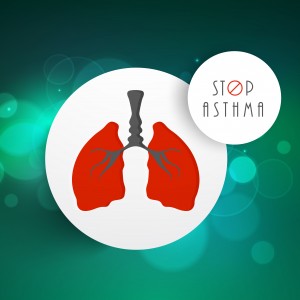 In a new study entitled “ICOS:ICOS-Ligand Interaction Is Required for Type 2 Innate Lymphoid Cell Function, Homeostasis, and Induction of Airway Hyperreactivity” a research team identified a new factor critical for type 2 innate lymphoid cells survival and function, a specific subset of immune cells with an established role in asthma pathogenesis. The study was published in the journal Immunity.
In a new study entitled “ICOS:ICOS-Ligand Interaction Is Required for Type 2 Innate Lymphoid Cell Function, Homeostasis, and Induction of Airway Hyperreactivity” a research team identified a new factor critical for type 2 innate lymphoid cells survival and function, a specific subset of immune cells with an established role in asthma pathogenesis. The study was published in the journal Immunity.
Asthma currently affects 18.7 million adults and 6.8 million children in the United States alone, according to data from the Centers for Disease Control and Prevention. While what causes asthma is unknown, it is established among researchers that both genetic and environmental factors play a key role for asthma development. A specific subset of immune cells, the T helper type 2 (Th2) cells upon exposure to allergens release cytokines causing asthma. Recently, however, a new subset of immune cells – Type 2 innate lymphoid cells (ILC2s) – by releasing high amounts of the cytokines interleukin 5 (IL-5) and 3 (IL-13) contribute to asthma pathogenesis by increasing eosinophils (a type of white blood cell with key roles in the immune system fight against certain infections) counts in the blood and airway hyper reactivity (a characteristic feature of asthma denoted by an exaggerated airway narrowing in response to allergens but also other non-specific stimuli, such as cold-air). Targeting ILC2s could help prevent the escalation of asthma pathogenesis, but until now, no immune cell markers were known, rendering ILC2s a difficult target for therapeutics.
[adrotate group=”11″]
In this study, a research team at the Keck School of Medicine, University of Southern California (USC) identified a molecule – inducible T cell co-stimulator (ICOS) – as a critical factor for ILC2s survival and normal function via its binding activity to ICOS-ligand (ICOS-L). The team performed studies in mouse ILC2s cells lacking ICOS and also in ILC2s human cells where they blocked the ICOS:ICOS-ligand interaction and showed that there is a reduction in both IL-5 and IL1-3 secretion, leading to a reduction in lung inflammation and airway hyper reactivity.
The authors’ findings identified the ICOS:ICOS-ligand signaling as a key regulator of ILC2s survival, suggesting that potential therapeutics targeting this pathway could result in an effective treatment for asthma.
Omid Akbari, Ph.D., associate professor of Molecular and Cellular Immunology at the Keck School of Medicine, University of Southern California (USC) and study lead author commented in a press release, “If we can target ILC2s, we might be able to cure asthma or exacerbations caused by these particular cells. In this study, we discovered molecules critical to ILC2 homeostasis, survival and function. We believe that targeting these molecules or related pathways could one day cure a patient with ILC2-dependent asthma.”

